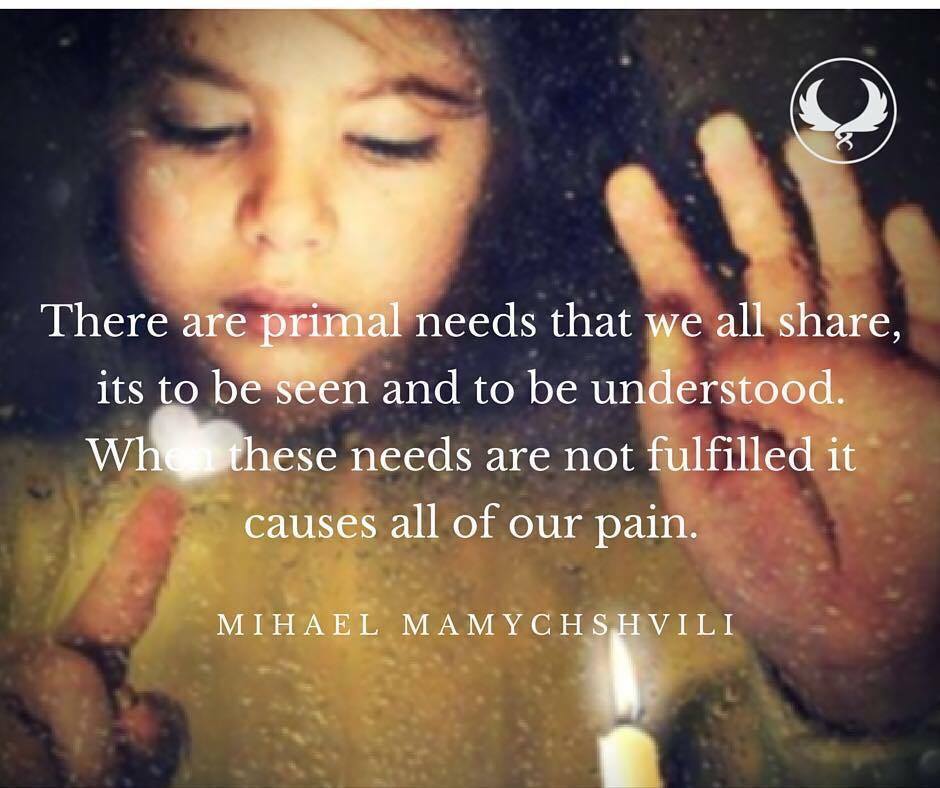How do we build trust with complex trauma and complex pain patients

At one point in my early twenties, I was a complex patient who had chronic conditions trying many treatments and therapies and then discovering underneath all of it were traumas. This led to 25 years of trying to understand the complexity of trauma and many of our "diseases".

So let's dive into it, shall we?
"Treatment-resistant patients" with trauma and chronic pain represent a significant challenge in healthcare, often embodying the most complex cases in clinical practice. These individuals typically experience chronic symptoms that persist despite numerous conventional and alternative treatments.
According to the American Academy of Pain Medicine, about 50 million adults in the United States suffer from chronic pain, with approximately 20% classified as having high-impact chronic pain that severely limits life or work activities.
In Europe, a similar picture emerges, with the European Pain Federation estimating that around 150 million adults live with chronic pain, and in Canada, chronic pain affects nearly one in five adults, as reported by the Canadian Pain Task Force.
Additionally, individuals with a history of trauma are more likely to develop chronic pain, with up to 30% of trauma survivors experiencing chronic pain as a long-term consequence.
In Europe, studies suggest that chronic pain prevalence among trauma survivors ranges from 20% to 50%, depending on the population and the type of trauma. In Canada, about 25% of individuals with chronic pain report a history of trauma, highlighting the strong association between trauma and persistent pain.
Understanding the profile of treatment-resistant patients is crucial, as it sheds light on the intricate interplay between physical and psychological factors contributing to their condition.
These patients often have a long history of medical interventions, co-existing mental health issues, and a complex relationship with their pain, which standard medical approaches fail to resolve. Addressing their needs requires a nuanced, multidisciplinary approach that considers the full spectrum of their experiences.

A treatment-resistant patient in the context of trauma and chronic pain typically presents with persistent symptoms that do not improve despite multiple attempts with conventional or alternative therapies. These patients often have complex medical histories, involving both physical and psychological components, making their conditions challenging to treat. They may exhibit:
1. Chronic Physical Symptoms: Persistent pain, fatigue, or other bodily discomforts that do not respond to usual pain management strategies.
2. Emotional and Psychological Challenges: Co-existing mental health issues such as depression, anxiety, or PTSD, can exacerbate their physical symptoms and make it harder to treat the pain effectively.
3. History of Multiple Treatments: These patients often have a history of trying various medications, physical therapies, and alternative treatments, with little to no long-term relief.
4. Heightened Sensitivity: A heightened sensitivity to pain or even to touch, a condition often associated with central sensitization, where the nervous system becomes stuck in a persistent state of high reactivity.
5. Cognitive and Emotional Struggles: Difficulties with concentration, memory, mood swings, or a sense of hopelessness, which can affect their overall ability to cope with their condition.
6. Resistance to New Treatments: A potential skepticism or reluctance to try new treatments due to past experiences of failure, which can create a challenge in gaining their trust and commitment to new approaches.
Understanding these patients requires a comprehensive approach that addresses both the physical and emotional aspects of their condition, often involving a multidisciplinary team and integrative therapies that cater to their unique needs. But that Is all based on the therapist's ability to build trust and create boundaries, which brings about connection, safety resonance and eventually an alliance.

In writing about the important boundaries between a therapist and a patient dealing with trauma and chronic pain, several key principles must be highlighted. Therapists are called to create a safe space for healing, which involves embodying the following principles:
1. Creating Space: Establishing an environment where patients feel safe expressing their feelings and experiences. Which always starts internally inside the therapist and translates into the treatment room environment.
Even though you are interviewing them, they are in reality interviewing you. Even though you are assessing them in reality also they are assessing you. They inspect everything and check for evidence of why they should not trust you.
2. Being Clear: Communication should be transparent so the patient understands the therapeutic process and boundaries. People come to us with two inherent needs to be SEEN and to be UNDERSTOOD. If you can fulfill those needs they can start to let go of their defences.
I am always clear with my voice and often pay attention to my tone, body language and theirs too. I explain everything that I do and recruit their permission and assistance, which is key. I try and make everything sound straightforward and use clean, clear language and many metaphors as I am speaking the language of the body and subconscious.
3. Trauma-Informed Care: Therapists must have specialized training to recognize and respond to the effects of trauma. Understanding the complexities of trauma is essential for effective treatment. You must fully commit as a therapist to want to work with trauma, and that means working with the roots. Therefore, get yourself trained and as informed as you can about it.
4. Self-Work: Therapists should engage in their personal therapy or professional development to resolve their issues and biases. This ensures they can provide the highest level of care without projecting their struggles onto the patient.
How do you know you did enough self-work? Can you sit with everything that can come up in a session? CAN YOU BE WITH RAGE, ANGER, GRIEF, DEEP SORROW, DARKNESS, BLAME, SHAME, UNEXPLAINED RESPONSES.
Can you be most comfortable with the most uncomfortable?
5. High Level of Care: This involves being attentive to the patient's needs and adapting treatment to accommodate their unique experiences and reactions.Becoming their Allie, not just their therapist. Fully present, highly engaged, and completely relaxed to the best of your abilities and beyond the ego to your client's best interest and highest good.
6. Development of Senses and Palpation Skills: Building a strong awareness of bodily sensations enhances the therapeutic process, allowing therapists to better understand and respond to their patients' physical and emotional states.
Intuition Is a meta-skill to help bypass protective mechanisms and complexity. You must as a therapist working with trauma always have your intuitive skills engaged while being grounded and highly present. I always say you develop when you can see two people in front of you.
Therapists must also be mindful of their responses, including potential transference, triggers, and judgments. Regular practices of Self-awareness help prevent the projection of personal feelings onto patients. To avoid trauma fatigue or secondary traumatic stress, self-care is essential for the therapist. This enables them to sustain their emotional health and continue providing effective support.
When addressing the qualities that patients suffering from trauma and chronic pain may exhibit, it’s crucial to take a closer look at each aspect, as they reflect a complex interplay of psychological, emotional, and physical responses. Here’s a more detailed breakdown of these qualities:
1. Disorganized BodyMind
Patients often experience a disconnect between their physical sensations and emotional state. This disorganization can manifest in:
Difficulty in Identifying Emotions: Patients may struggle to label their feelings or comprehend the physical sensations associated with those emotions.
Inconsistency between Mind and Body: For instance, a patient might recognize a situation that triggers anxiety but not feel the accompanying physical symptoms like tension or increased heart rate, or vice versa.
2. Distrustful
Due to past experiences, especially if they involve betrayal or abandonment, patients may enter therapy with deep-seated distrust. This can lead to:
Skepticism towards the Therapist: Patients might question the therapist’s intentions, fearing that they will be hurt or be disappointed again.
Testing Boundaries: They may engage in behaviours to test the therapist’s commitment, like being late or skipping sessions, as a way to gauge whether their therapist will abandon them.
3. Testing You
A patient’s testing behaviour can be a protective mechanism rooted in their need for safety. Common forms of testing might include:
Pushing Boundaries: Experiment with what the therapist will tolerate in terms of behaviour or emotional disclosure.
Provocation: Making provocative statements or challenging the therapist's authority to elicit a reaction, assessing how the therapist will respond under stress.
4. Resistant to Change
Resisting change is a natural response for those who have experienced trauma, as it often leads to feelings of uncertainty. This may present as:
Fear of the Unknown: Patients might be apprehensive about changing behaviours or thought patterns that have, albeit negatively, become familiar.
Self-Sabotage: They may subconsciously undermine their progress, maintaining an anchor in their current state of suffering, which feels safer than the risk of change.
5. Blind Spots
Trauma can create significant blind spots in a patient’s self-awareness. This can result in:
Inability to Recognize Patterns: Patients may struggle to see the impact of their trauma on their current behaviours or relationships, which complicates their healing process.
Minimization of Issues: They might downplay the severity of their trauma or its effects, making it difficult for them to acknowledge the need for change.
6. Vigilance
Vigilance is a coping mechanism developed in response to trauma, characterized by heightened awareness of surroundings.
This may involve:
Overactivity in the Sympathetic Nervous System: Patients may experience hyperarousal symptoms, always being on edge or overly alert to potential threats.
Difficulty Relaxing: They often find it hard to let down their guard, making it challenging to engage fully in therapy or to trust the therapeutic process.
7. Distorted Perception
Trauma can significantly alter how individuals perceive themselves and the world around them. This can involve:
Negative Self-Image: Patients may see themselves through a lens of inadequacy, unworthiness, or guilt, which can hinder progress in therapy.
Cognitive Dissonance: Their perceptions may be inconsistent with reality, leading to a conflict between their lived experiences and what they believe they deserve or can achieve.
8. Highly Aware vs. Numb
Patients may swing between hyper-awareness and emotional numbness, creating a rollercoaster of feelings. This duality can be challenging:
Hyper-Awareness: On one hand, patients may become obsessively aware of their surroundings or bodily sensations, making it hard to focus.
Emotional Numbness: Conversely, they may feel completely disconnected from their emotions, leading to a sense of emptiness or apathy towards life and relationships.
9. Self-Sabotaging
Self-sabotage often surfaces as a way to cope with feelings of unworthiness. Common patterns include:
Avoidance of Opportunities: They may deliberately miss chances for growth or success due to a belief that they do not deserve them.
Negative Self-Talk: Engaging in a narrative that reinforces feelings of failure, leading to a cycle of self-defeating behaviours.
10. Lacking Hope, Helplessness and Despair
These feelings can saturate every aspect of a patient's life, leading to:
A Sense of Powerlessness: Patients may feel that they have no control over their situation, making it difficult for them to envision a path forward.
Despair: This pervasive feeling can drain motivation, leading to withdrawal from social connections and potential therapeutic involvement.
Understanding these qualities in-depth allows therapists to tailor their approach, ensuring they provide the support and care that is both compassionate and effective. Therapists must remain grounded and aware of their boundaries while being empathetic to these complexities, fostering a healing environment that encourages growth and resilience.
In addition, there are processes that you can learn to use a boundary exercise as an assessment tool that gives you a direct experience with what they are dealing with physically, psychologically and emotionally, feeling the pressures that life and others put on them.
This process that I developed is a great tool for the therapist's inner landscape when engaging with a client's trauma story. It is very profound as it gives both a physical, energetic and visceral experience of boundaries.
The process starts with the pressure created by both the practitioner and the patient meeting hands in a space with an Imagined line drawn to divide the space into your space and my space.
The therapist represents life and people that are in the patient's life, past and present. Pressure is delivered by the hands of the therapists and the patient is asked through their own hands and body to report what they feel, sense and experience; on the physical aspect first.
Eg. "Where do you feel this pressure? What parts of the body?"
The therapist guides them through their bodies and they collect and describe their physical reactions. Then the therapist directs them to the mental aspect.
" What does the mind do with all these sensations and reactions? Where does the mind take you?"
The are a few more subtle steps but lastly, the therapist directs them to the emotional aspect.
"What are the emotions underneath all of it?" But at this point even before the questions are asked the emotions already surface.
The last part finding the state they resort to.
"What is the state that you resort to when you feel all of this? "
When they reach there, both you, as a therapist, and the patient have a clear idea about the boundaries. Every layer of them is affected by the pressures of life and people, past and present.
This is when I usually give them a tool that creates substantial positive change 90 percent of the time. The change through step two is so powerful that it gives them an experience of embodied trust and demonstrates its Immediate benefits for their physical, mental, emotional, and overall state.
To conclude, Trauma and chronic pain are interconnected and infiltrate every layer of the person and being and can haunt a person for a lifetime. Even with their and therapists' best efforts, they can be treatment-resistant and eventually lose hope.
Being trauma-informed is necessary for all therapists and learning how to establish boundaries and be ethical by "walking the talk", working on your traumas and boundaries as a therapist can create that safe space for the person to be SEEN and UNDERSTOOD In the deepest ways so the suffering can be revealed and healed through an alliance between the two.

Mihael Mamychshvili
Creator NeuroPath Reset Method